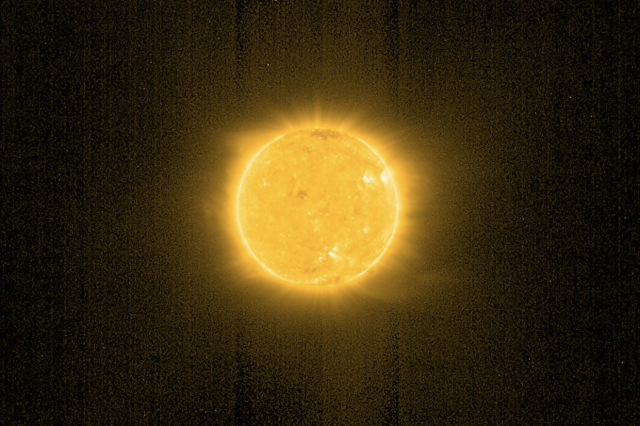"Our results suggest the story of North African climate is dominantly this 20,000-year beat, going back and forth between a green and dry Sahara."
Unraveling the Sahara’s Climate Mystery
Dust deposits on the coasts of West Africa over the past 240,000 years have revealed that the Sahara, the world’s largest desert, has alternated between humid and dry climates approximately every 20,000 years. Researchers from the Massachusetts Institute of TechnologySahara cycles (MIT) attribute this climatic pendulum to changes in Earth’s axis as the planet orbits the Sun, affecting the distribution of sunlight between seasons.
The Desert Breathes: Sahara’s Long Climate Cycles
The periodic fluctuations in sunlight exposure cause the Sahara to experience cycles of blossoming and drying out. Experts suggest that when Earth is tilted to receive maximum summer sunlight during its orbit, the increased solar flux intensifies the region’s monsoon activity, leading to a wetter, greener Sahara. Conversely, when Earth’s axis rotates at an angle that reduces summer sunlight, monsoon activity weakens, and the Sahara becomes drier, resembling the desert we see today.
David McGee, an associate professor in MIT’s Department of Earth, Atmospheric, and Planetary Sciences, explained, “Our results suggest the story of North African climate is dominantly this 20,000-year beat, going back and forth between a green and dry Sahara.” He added that understanding the Sahara’s climatic history could provide insights into suitable times for human settlement and dispersal out of Africa.
New Findings Uncovered in Science Advances
Scientists have discovered that every year, northeasterly winds transport hundreds of millions of tons of Saharan dust, depositing much of it in the Atlantic Ocean off West Africa’s coast. Layers of this dust, accumulated over millennia, serve as a geological record of North Africa’s climatic history. Thicker dust layers indicate arid periods, while less dusty layers suggest wetter seasons.
Sediment Cores: Unlocking Climate History
To uncover the Sahara’s climate history, researchers analyzed sediment cores extracted from the ocean floor off West Africa’s coast. These cores contain layers of ancient sediments, including Saharan dust and traces of life forms like tiny plankton shells, deposited over millions of years.
Previous studies had linked the Sahara’s alternating wet and dry periods to Earth’s ice age cycles, which occur approximately every 100,000 years. However, MIT researchers argue that this interpretation contradicts climate models that suggest Saharan climate should be driven by the region’s monsoon season, influenced by Earth’s axis tilt and summer sunlight.
Thorium: A Key to Understanding Sediment Accumulation
To resolve this discrepancy, MIT scientists used their techniques to study a sediment core obtained by the University of Bordeaux researchers. They analyzed sediment layers deposited over the last 240,000 years for dust traces and concentrations of a rare thorium isotope, which provided insights into the rate of dust accumulation on the ocean floor.
Thorium is produced at a constant rate in the ocean due to trace amounts of dissolved uranium in seawater, and it quickly attaches to sinking sediments. By examining thorium concentrations in sediments, scientists can determine how quickly dust and other sediments accumulated on the ocean floor throughout history.
A New Perspective: Sahara’s Wet-Dry Cycle
The researchers found that the Sahara’s wet-dry cycle was primarily driven by a 20,000-year pattern, synchronized with the region’s monsoon activity and Earth’s periodic tilt. This new understanding challenges previous assumptions about the role of ice ages in the Sahara’s climate history.
McGee concluded, “We’ve assumed that ice ages have been the key thing in making the Sahara dry versus wet. Now we show that it’s primarily these cyclic changes in Earth’s orbit that have driven wet versus dry periods. It seems like such an impenetrable, inhospitable landscape, and yet it’s come and gone many times, and shifted between grasslands and a much wetter environment, and back to dry climates, even over the last quarter million years.”
Implications for Human Settlement and Dispersal
This new understanding of the Sahara’s climate history could have significant implications for studying human settlement and dispersal patterns in and out of Africa. The knowledge of wetter periods in the Sahara’s past may help researchers identify ancient migration routes and establish potential windows of time when humans might have crossed the desert more easily.
Challenges and Future Research
While the MIT team’s findings provide valuable insights into the Sahara’s climatic past, additional research is needed to confirm these results and explore potential correlations with other environmental factors. Future studies could focus on other sediment cores from different regions or investigate further back in time to provide a more comprehensive understanding of the Sahara’s climate history.
Rethinking the Sahara’s Climate Past
The discovery that the Sahara’s climate has oscillated between wet and dry periods every 20,000 years challenges previous assumptions about the role of ice ages in the desert’s history. Instead, Earth’s axis tilt and orbit-driven changes in sunlight distribution appear to be the primary drivers of the Sahara’s climatic pendulum. This new perspective not only reshapes our understanding of the Sahara’s past but also opens up new avenues for researching human settlement and migration patterns in the region.
PLEASE READ: Have something to add? Visit Curiosmos on Facebook. Join the discussion in our mobile Telegram group. Also, follow us on Google News. Interesting in history, mysteries, and more? Visit Ancient Library’s Telegram group and become part of an exclusive group.





